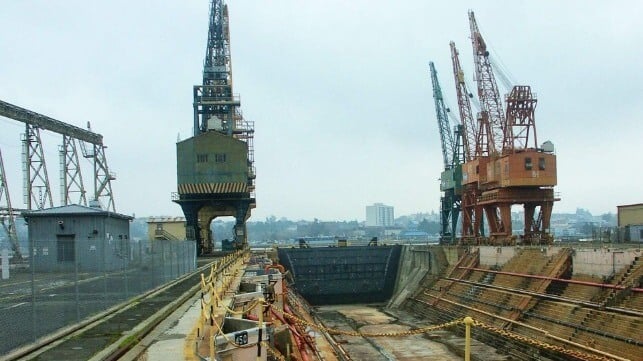U.S.-Japan Tariff Deal Could Include Billions for U.S. Shipyards

American shipbuilding is one of five strategic industrial sectors that stand to benefit from a massive foreign investment pledge from Japan.
During the White House's tariff negotiations with the Japanese government over the last several months, Commerce Secretary Howard Lutnick proposed creating a multibillion-dollar Japanese investment package that would be directed by President Donald Trump. In exchange for the pledge and a loosening of Japan's limits on American imports, the U.S. would lower its tariffs on Japanese goods and cars.
After Trump's review, the final agreed figure for the fund comes to $550 billion, with the U.S. government retaining 90 percent of the profits from the investments. If actualized, it would be the largest foreign investment in world history. It is also an unprecedented allocation of foreign resources for personal control by a U.S. president.
Trump's list of top industries for focused Japanese investment includes LNG, grid modernization, semiconductors, critical minerals production, pharmaceuticals, and commercial and defense shipbuilding - including both new yards and modernization of existing sites. Rumors of a possible joint Japanese-American shipyard investment fund have swirled for months, and the pledge would be more than enough to fully capitalize it (dwarfing Japan's $7 billion investment plan for reviving its own domestic shipbuilding industry).
The LNG component likely refers to the possibility of Japanese investment in the Alaska LNG pipeline and terminal project, a $44 billion undertaking that has been in planning for four decades. Trump announced earlier this week that Japan is “forming a joint venture with us in Alaska for the LNG."
The White House did not provide a timeline for the Japanese investments, nor a breakdown of the form of the funding. Treasury Secretary Scott Bessent told Bloomberg that the topline figure includes a combination of equity, loan guarantees and lending. Financial analysts suggest that a large share of the total would need to come from Japanese private-sector investment, which would ultimately be influenced by market factors outside of the control of either government; follow-through is not guaranteed.
"Investment in the United States is ultimately a decision for Japanese companies to make, and the $550 billion figure is merely a government target," said economist Takahide Kiuchi of Nomura Research Institute in a client note. The pledge, he said, is "little more than a verbal commitment."
Japan's government may feel pressure if it does not follow the White House's directions. Bessent told Fox that "if the president is unhappy" at any point, the tariff rate could be raised back to 25 percent again.
Top image: Tomincal / CC BY SA 3.0
